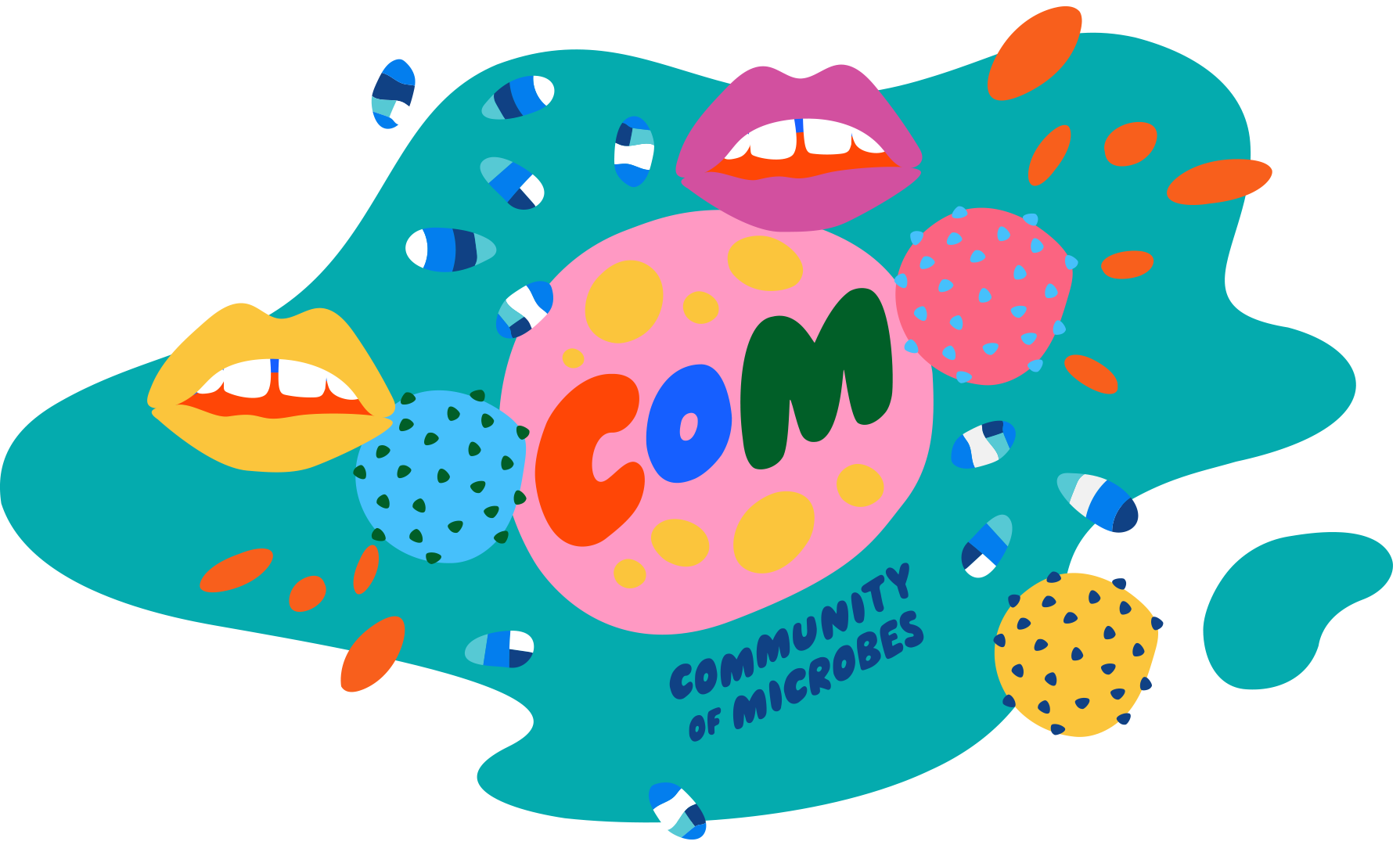
Subway
We experience the subway as a space where diverse visitors co-mingle and the same is true at the microscopic level. The habitats of the subway include damp pipes, oil puddles near the train tracks and dry, nutrient-free plastic and glass deserts of touch screens. These cosmopolitan environments are home to the microscopic astronauts that traveled from our skin to the touch screen, to those that traveled on the wind from rushing trains, and even those clinging to the soil particles on ours shoes from our backyards. While some take up residence and grow, others are just like us, commuters passing by on their way to other locations. The subway environment can contain thousands of different species of microbes.

The Players
Micrococcus luteus - Micrococcus luteus is a skin-associated microbe that can be found on the surfaces of the subway we touch. This microbe grows by duplicating itself in a manner that looks like square blocks of cells under a microscope. While this bacterial species is one of the culprits behind the particular stench of gym bags and sweaty clothing, in the future it may be something more worthy of discussing at the dinner table. Micrococcus luteus is particularly good at surviving the damaging effects of UV radiation and is being investigated by some scientists as a future sun protectant.

Bacillus species - Under stressful environments like the dry conditions found on a hot subway tiles, these bacterial cells respond by creating a new cell form within them that can withstand some of the world’s greatest stressors. These spore cells will stay dormant, hibernating until the environment is a bit more pleasant -- perhaps a bit more moist, or if a drop of delicious drop of oil or a fragment of food falls their way. In the lab when these bacteria are kept happy they can produce the molecules -- enzymes -- we use in some laundry detergents to break down stains at colder temperatures.

Propionibacterium species - Found on the touch screens and turnstiles of subways, or many of the places we leave behind microbes as well as fingerprints, these bacterial cells are visitors to subways from their residence on our skin. On our skin they go about their normal job of being in the microbial jungle of our microbiome, but some species of Propionibacteria have an entirely different day job. They are used to make swiss cheese. By munching on the carbohydrates in milk, they produce the bubbles of CO2 that solidify, forming the holes we are familiar with in swiss cheese.

Alternaria species - Do you have seasonal allergies? While your body may be responding to grass or tree pollen, your body could also be triggered by these fungi floating in the wind have triggered your immune system into overdrive. While unlikely to cause disease, they are particularly good at causing allergies. Abundant throughout the world species of these fungi are often transported by the wind. As exceptional travelers, they have even been found in the atmosphere over Antarctica! In the lab these fungi can produce molecules (enzymes) that help with bioremediation -- the use of lifeforms to break down toxic waste products to clean up pollution.

